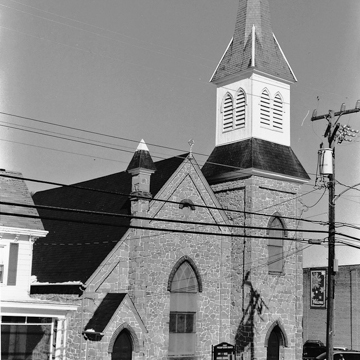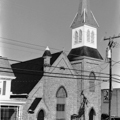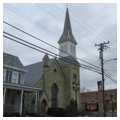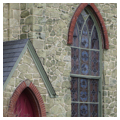The original Duck Creek Presbyterian Church (1733, abandoned 1846) was located at today's Holy Hill Cemetery on Lake Como, where a historical marker was erected in 2003. A primitive painting (discovered in a Michigan attic in 1961) shows that it had a jerkinhead roof, like several early Delaware churches. In the nineteenth century, the congregation moved into town, building a church that was later turned over to Methodists and that burned in 1996. The present simple Gothic Revival edifice of green serpentine (with a hundred-foot broach spire rising from an attached tower) was erected on busy Commerce Street, the form of its facade emulating that of the much larger Asbury Methodist (KT6) nearby. Brick was used as trim. There were never any buttresses (unlike the serpentine St. Anne's, LN16), as neighboring buildings pressed close on both sides. The interior is little changed, with original pews, hammerbeam ceiling, and stained glass that predates the fashion for opalescent glass in the 1890s. Its grisaille stenciling is faded, but it remains a valuable survival. The organ of 1904 no longer works, but the painted pipes are preserved.


























